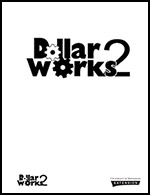Dollar Works 2 is a comprehensive personal financial education program. It includes knowledge, tools, and strategies for teaching others about personal finances.
You can use Dollar Works 2 to:
Teach basic economic concepts to individuals or groups, in English or Spanish.
Strengthen people’s skills in managing personal finances.
Provide tools for making sound decisions with money.
Help others meet personal goals.
Increase individuals' financial stability.
Why choose Dollar Works 2
It is culturally adapted and mindful. People understand and use money within the context of their culture and life experiences. Dollar Works 2 is based on information from focus groups of Dollar Works users and Latino audiences. All handouts have been culturally adapted for English- and Spanish-speaking audiences. The “Connecting culture and financial resources” unit helps strengthen the skills of those who teach personal finances across cultures.
It teaches decision-making skills. Families need more than information and practice. They need to learn how to make changes in managing their personal finances.
It works. Our team has evaluated the effectiveness of this curriculum. You can rest assured it is a good use of you and your clients’ time.
Curriculum features
The Dollar Works 2 package includes a curriculum binder with a disc of all handouts (action pages).
The curriculum includes:
Twelve independent units — pick and choose what’s right for your learners.
Teaching goals, learning targets, lists of terms, and evaluation tools for each unit.
Action pages in English and Spanish. Take learners from practice to application in their own lives.
Instructor resources that help with planning and delivering a successful teaching session.
Dollar Works 2 addresses these topics:
Connecting culture and financial resources.
Making decisions about money.
Making a spending plan.
Managing a spending plan.
Saving and investing.
Understanding a pay statement and taxes.
Using a bank account.
Using credit wisely.
Managing debt.
Managing risk with insurance.
Solving consumer problems.
Teaching children about money.
Dollar Works 2 curriculum
Preview and orderMore about Dollar Works 2
Reviewed in 2018


